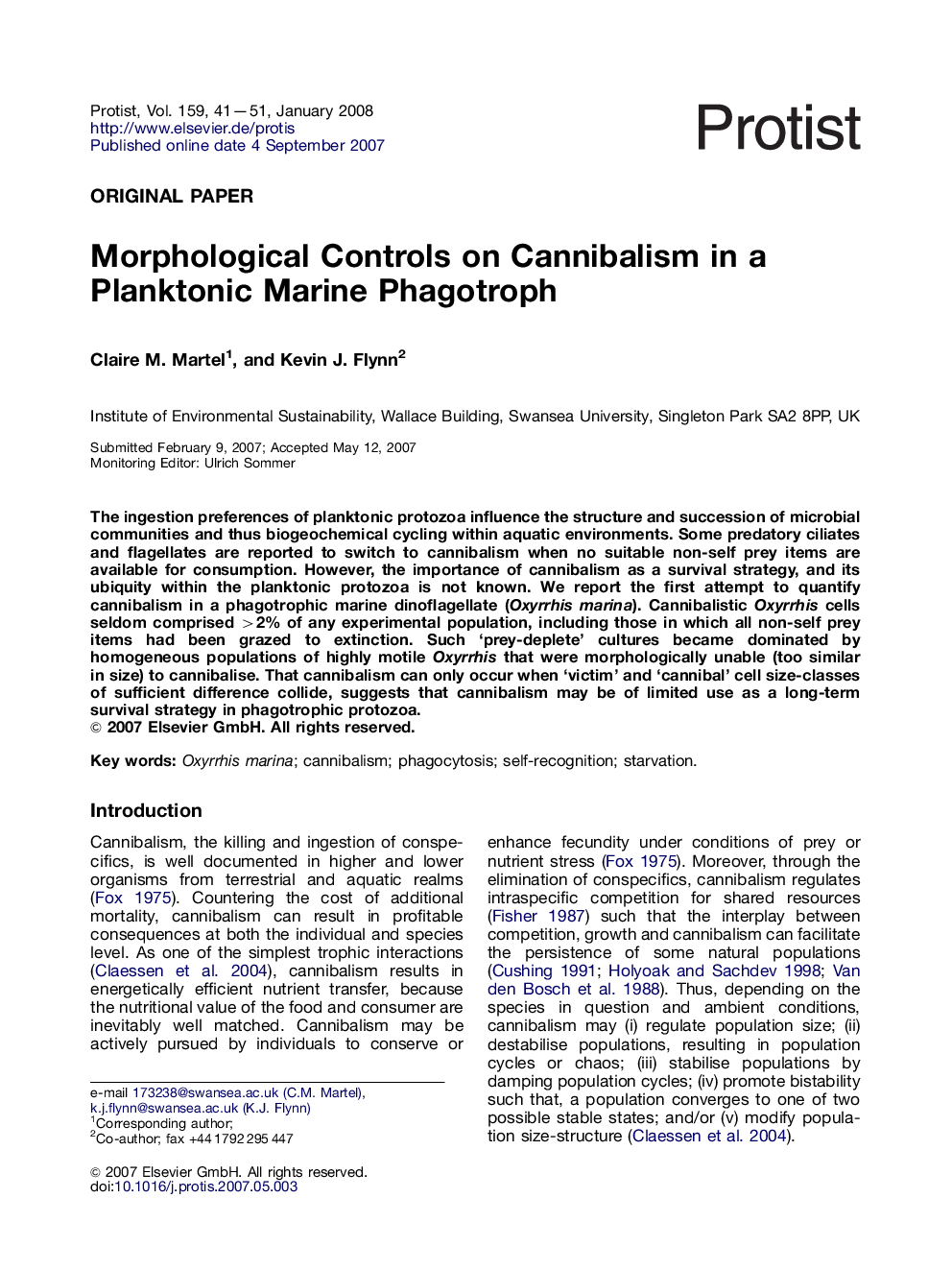| Article ID | Journal | Published Year | Pages | File Type |
|---|---|---|---|---|
| 2062314 | Protist | 2008 | 11 Pages |
The ingestion preferences of planktonic protozoa influence the structure and succession of microbial communities and thus biogeochemical cycling within aquatic environments. Some predatory ciliates and flagellates are reported to switch to cannibalism when no suitable non-self prey items are available for consumption. However, the importance of cannibalism as a survival strategy, and its ubiquity within the planktonic protozoa is not known. We report the first attempt to quantify cannibalism in a phagotrophic marine dinoflagellate (Oxyrrhis marina). Cannibalistic Oxyrrhis cells seldom comprised >2% of any experimental population, including those in which all non-self prey items had been grazed to extinction. Such ‘prey-deplete’ cultures became dominated by homogeneous populations of highly motile Oxyrrhis that were morphologically unable (too similar in size) to cannibalise. That cannibalism can only occur when ‘victim’ and ‘cannibal’ cell size-classes of sufficient difference collide, suggests that cannibalism may be of limited use as a long-term survival strategy in phagotrophic protozoa.
